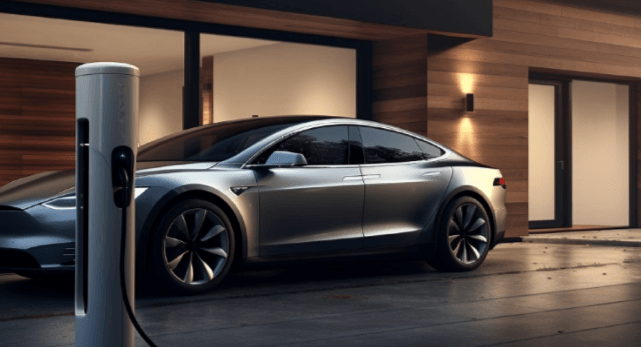What are the emerging trends in the electric vehicle market in the USA?

Introduction
The electric vehicle (EV) market in the USA is experiencing rapid growth and transformation. This dynamic sector is shaped by advancements in technology, evolving consumer preferences, and supportive government policies. Understanding the emerging trends is essential for stakeholders in the automotive industry, policymakers, and consumers alike.
Growth of Electric Vehicles (EVs) in the USA
The growth trajectory of electric vehicles in the USA is impressive. The market has expanded significantly over the past decade, driven by technological innovations, increased consumer awareness, and favorable economic conditions. EV sales continue to rise, with projections indicating sustained growth in the coming years.
Government Policies and Incentives
Federal Initiatives: The federal government plays a crucial role in promoting EV adoption through tax credits, grants, and subsidies. Programs like the federal EV tax credit provide substantial financial incentives to buyers, making EVs more affordable.
State-Level Policies: Many states have implemented their own policies to support EV adoption. California, for instance, has stringent emission standards and offers additional rebates to EV buyers. Other states are following suit, creating a patchwork of supportive environments across the country.
Advancements in Battery Technology
Increased Range: One of the most significant advancements in the EV market is the improvement in battery technology. Modern EVs boast extended ranges, making them more practical for everyday use and long-distance travel.
Faster Charging Times: Innovations in battery technology have also led to reduced charging times. Rapid charging stations are becoming more prevalent, allowing EV owners to recharge their vehicles quickly and conveniently.
Expansion of Charging Infrastructure
Urban vs. Rural Deployment: The expansion of charging infrastructure is critical for the widespread adoption of EVs. Urban areas are seeing a rapid increase in the number of public charging stations, while rural areas are gradually catching up.
Public and Private Networks: Both public and private sectors are investing heavily in charging infrastructure. Companies like Tesla have established extensive networks of Superchargers, while government initiatives aim to increase the availability of charging stations nationwide.
Emergence of New Market Players
Startups: The EV market is attracting a plethora of new entrants, including innovative startups that are bringing fresh perspectives and cutting-edge technologies to the industry.
Traditional Automakers Entering the Market: Established automotive companies are also expanding their EV offerings. Brands like Ford and General Motors are committing significant resources to develop and market electric models, signaling a broader industry shift towards electrification.
Consumer Adoption and Market Trends
Demographic Shifts: Younger consumers are showing a higher propensity for adopting EVs, driven by environmental concerns and a preference for modern, tech-savvy vehicles.
Consumer Preferences: Market trends indicate a growing preference for SUVs and crossover models among EV buyers. Automakers are responding by introducing more electric options in these popular segments.
Impact of COVID-19 on the EV Market
Supply Chain Challenges: The COVID-19 pandemic disrupted global supply chains, affecting the production of EVs and their components. Despite these challenges, the market has shown resilience and continues to grow.
Changes in Consumer Behavior: The pandemic has also influenced consumer behavior, with more people considering EVs due to their perceived health benefits and lower operating costs.
Autonomous and Connected EVs
Technology Integration: The integration of autonomous driving and connected vehicle technologies is a significant trend in the EV market. Companies are developing vehicles with advanced driver assistance systems (ADAS) and full self-driving capabilities.
Regulatory Challenges: While the technology is advancing rapidly, regulatory frameworks are still catching up. Policymakers need to address safety standards and liability issues related to autonomous EVs.
Sustainability and Environmental Impact
Reduction in Emissions: EVs contribute significantly to reducing greenhouse gas emissions, making them a critical component of efforts to combat climate change.
Lifecycle Analysis: It’s essential to consider the entire lifecycle of EVs, from production to disposal, to fully understand their environmental impact. Advances in recycling and sustainable manufacturing processes are helping to mitigate potential negative effects.
Economic Impacts of EV Adoption
Job Creation: The EV industry is creating numerous job opportunities, from manufacturing and infrastructure development to sales and maintenance.
Economic Growth Opportunities: The shift towards EVs presents substantial economic growth opportunities, including the potential for the USA to become a leader in EV technology and production.
EV Financing and Leasing Options
Trends in Financing: As the market matures, more financing options are becoming available, making it easier for consumers to purchase EVs.
Lease Programs: Leasing options are also expanding, providing consumers with flexible and affordable ways to drive the latest electric models without long-term commitments.
Innovations in EV Design and Features
Aesthetic Trends: Modern EVs are not just about efficiency; they also feature sleek, futuristic designs that appeal to a broad range of consumers.
Functional Innovations: Innovations in vehicle features, such as enhanced infotainment systems and advanced safety technologies, are making EVs more attractive to potential buyers.
The Role of Renewable Energy in EV Charging
Solar: Integrating solar energy into EV charging infrastructure is an emerging trend, providing a sustainable and cost-effective way to power electric vehicles.
Wind Integration: Wind energy is also being utilized to support EV charging, contributing to a cleaner energy mix and reducing reliance on fossil fuels.
Corporate Fleets and EV Adoption
Commercial Vehicle Trends: Businesses are increasingly adopting EVs for their fleets, recognizing the benefits of lower operating costs and reduced emissions.
Benefits for Businesses: Companies that switch to electric fleets can also enjoy tax incentives, enhanced corporate social responsibility, and improved public perception.
Challenges Facing the EV Market
Infrastructure Limitations: Despite significant progress, the charging infrastructure still faces challenges, particularly in rural areas and regions with harsh climates.
Consumer Concerns: Addressing consumer concerns about range anxiety, charging availability, and vehicle cost is essential for further market growth.
Future Projections and Market Forecasts
Short-Term: In the short term, the EV market is expected to continue its upward trajectory, driven by new model releases and increasing consumer interest.
Long-Term: Long-term projections indicate a substantial shift towards electric mobility, with EVs potentially dominating the automotive market by mid-century.
Case Studies of Successful EV Implementation
Urban Areas: Cities like Los Angeles and New York are leading the way in EV adoption, with extensive charging networks and supportive local policies.
Corporate Initiatives: Companies such as Amazon and UPS are investing in electric delivery vehicles, demonstrating the viability and benefits of electric fleets.
Role of Technology Companies in the EV Market
Partnerships: Collaborations between automakers and technology companies are driving innovation in the EV market. Examples include partnerships for developing autonomous driving technologies and advanced battery systems.
Innovations in Software and Hardware: Tech companies are contributing to the EV industry by developing software for vehicle management and hardware for charging and battery solutions.
Policy Recommendations for EV Growth
Suggestions for Federal and State Governments: Policymakers should consider expanding tax incentives, investing in charging infrastructure, and setting ambitious targets for EV adoption to accelerate market growth.
Public Perception and Media Influence
Media Coverage: Media plays a crucial role in shaping public perception of EVs. Positive coverage and high-profile endorsements can significantly boost consumer interest.
Public Opinion Trends: Understanding public opinion trends helps policymakers and businesses tailor their strategies to address concerns and highlight the benefits of EVs.
International Comparisons and Lessons
Learning from Leading EV Markets Worldwide: Countries like Norway and China provide valuable lessons for the USA. Their successful strategies, such as robust incentives and extensive infrastructure, can be adapted to the American context.
Collaborations between Automakers and Tech Companies
Examples of Successful Partnerships: Collaborations such as those between Tesla and Panasonic or Ford and Google highlight the benefits of combining automotive expertise with technological innovation.
Energy Storage Solutions for EVs
Home Storage: Home energy storage solutions, such as Tesla’s Powerwall, are becoming increasingly popular, allowing EV owners to store and use renewable energy efficiently.
Grid Integration: Integrating EVs with the power grid can provide stability and help manage energy demand, particularly during peak hours.
Vehicle-to-Grid (V2G) Technology
Benefits: V2G technology allows EVs to return power to the grid, offering benefits such as grid stability and potential cost savings for vehicle owners.
Implementation Challenges: Despite its potential, V2G technology faces challenges, including the need for standardized protocols and consumer acceptance.
Electrification of Public Transportation
Buses, Trains, and Other Public Transit Systems: Electrifying public transportation systems can significantly reduce urban emissions and improve air quality. Cities are increasingly investing in electric buses and other electric transit solutions.
Rural vs. Urban EV Adoption
Comparative Analysis: While urban areas lead in EV adoption due to better infrastructure and higher population density, rural areas present unique opportunities and challenges for EV growth.
Impact of EVs on Traditional Automotive Industry
Shifts in Production: The rise of EVs is prompting traditional automakers to rethink their production strategies, invest in new technologies, and retrain their workforce.
Employment Implications: The shift towards EVs also has implications for employment in the automotive industry, with a growing demand for skilled workers in EV manufacturing and maintenance.
Educational and Training Programs for EV Maintenance
Workforce Development: As the EV market grows, so does the need for specialized training programs to equip workers with the skills needed for EV maintenance and repair.
Specialized Training: Programs offered by technical schools and community colleges are essential for developing a workforce capable of supporting the EV industry’s growth.
Legal and Regulatory Framework
Compliance: Ensuring compliance with safety standards and environmental regulations is crucial for the sustainable growth of the EV market.
Incentives and Penalties: Governments can use a mix of incentives and penalties to encourage EV adoption and discourage reliance on fossil-fuel vehicles.
Consumer Awareness and Education
Campaigns: Public awareness campaigns are essential for educating consumers about the benefits of EVs, addressing misconceptions, and promoting informed purchasing decisions.
Information Dissemination: Providing accessible and accurate information about EVs through various channels can help increase consumer confidence and interest in electric vehicles.
FAQs
What are the main drivers of growth in the EV market in the USA?
- Technological advancements, government policies, and changing consumer preferences are the main drivers of growth in the EV market.
How has battery technology improved for EVs?
- Battery technology has improved by increasing range, reducing charging times, and enhancing overall efficiency and durability.
What role do government policies play in EV adoption?
- Government policies, including tax incentives, grants, and subsidies, significantly boost EV adoption by making them more affordable and supporting infrastructure development.
Are there differences in EV adoption between urban and rural areas?
- Yes, urban areas typically have more developed charging infrastructure and higher adoption rates, while rural areas face challenges but also present unique opportunities for growth.
How is the COVID-19 pandemic affecting the EV market?
- The pandemic has disrupted supply chains and influenced consumer behavior, but the EV market has shown resilience and continues to grow.
What are the economic benefits of adopting EVs?
- Adopting EVs can create jobs, stimulate economic growth, and position the USA as a leader in EV technology and production.
Conclusion
The electric vehicle market in the USA is on an exciting path of growth and innovation. With advancements in technology, supportive government policies, and increasing consumer interest, the future looks promising for electric vehicles. By addressing challenges and leveraging opportunities, the USA can lead the way in sustainable transportation.




